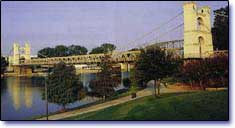

Places in Time
Abraxas Club ruled in the '70s
By Carl Hoover, Waco Tribune-Herald
Oct.10, 2005
For hundreds of Waco music fans in the early 1970s, the Abraxas Club offered a slice of Austin on the Old Dallas Highway .
From name acts in rock and Tejano music to a laid-back vibe, from the socializing and politicking that went on there to a reputation for drug use, the Abraxas created many fond memories in its four-year lifetime.
Austin , in fact, inspired the five men who started the nightclub in 1970. "We had been going to Austin to hear the music and thought, “Why can't we have one here?'” recalled Steve Espinoza, one of the club's five original partners.
They set up shop at 1509 Old Dallas Highway in a cinderblock building that once housed The Terrace Club, a country music nightclub where a younger Willie Nelson sometimes played.
With an Austin booking agent working for the Abraxas – the name was taken from rock guitarist Carlos Santana's famous 1970 album – the Waco club welcomed a Who's Who of Austin rock and Tejano music.
Among the best-known: Stevie Ray Vaughan, Jimmy Vaughan and the Thunderbirds, Paul Ray and the Cobras, Ruben Ramos, Angela Strehli, Tierra Tejana, Los Fabulosos, Slip of the Wrist, Crackerjack and Texas.
The Abraxas stage always had the red carpet rolled out for bands – literally – and many recalled the yellow-and-green sun painted behind the stage, the club's dark interior, its loud sound system and its Sunday afternoon barbecues.
“Oh, yeah, it was one of the coolest clubs here” recalled Waco rhythm-and-blues musician Tony Calhoun.
Calhoun, trained in trumpet and classical piano, dropped in whenever he and his mother visited his grandmother in Mart.
What Calhoun saw on the Abraxas stage, and at Waco 's Walker Auditorium, were professional musicians who knew their craft. “These guys knew what they were doing,” he said.
David Zychek, one of the area's best known hard rock guitarists, credited the club with making him and his colleagues in the band called Texas , then based outside of Houston , more serious about their music.
Texas ' regular gigs at the Abraxas typically packed the club, and Zychek fondly remembers the venue's management. “They treated us like royalty . . . and we got paid, even,” he said.
When Texas split up, its farewell concert was at the Abraxas Club, and fans' boisterous reception helped nudge Zychek and several of his bandmates into careers of creating original music.
The Abraxas Club also served as a meeting spot for the burgeoning Chicano movement in Texas .
Both Espinoza and El Tiempo publisher Ernesto Fraga belonged to the Mexican American Youth Organization, which evolved into the La Raza Unida political party in the early 1970s.
Fraga left for Austin in 1970, but recalls the Abraxas as a meeting place for Chicano activists.
While the Abraxas was identified as a Hispanic club, it was far from exclusive. Both white and black musicians remembered it as a place where races came together for the music.
“It was my first time ever to party with Mexicans,” said Calhoun, who is black. “Everyone who went in was welcome.”
That was intentional, Espinoza said. “We wanted to show everybody being fair,” he said.
Espinoza said the club's reputation at the time as a drug haven was overblown and incorrect – some musicians recall otherwise – but pressure from local police and the Texas Alcoholic Beverage Commission eventually led to the club's closing in 1974.
“We got raided every other month,” chuckled Willie Fuentes, who worked the club's security.
Espinoza, Fuentes and others connected with the club moved to Austin , only to return in Waco in later years.
Texas Meter and Device Company presently occupies the former Abraxas building; in fact, Espinoza says he was once hired to repaint his former club's interior.
Scores of fans and friends attended a 1991 Abraxas reunion held at the Waco Missions Club.
The music's gone, but the memories remain. “It was one of the coolest places in Texas ,” said Zychek.
For
more information, contact: John Young • Waco
Tribune-Herald •